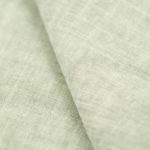Are you curious about the journey of cotton fabric production? In this article, we will guide you through the sequential steps involved.
From the initial harvest to the final quality control and packaging, you will learn about each crucial stage.
Discover how cotton is ginned, cleaned, carded, and combed before being spun into yarn.
Witness the intricate process of weaving the fabric and the final touches of finishing and dyeing.
Get ready to delve into the fascinating world of cotton fabric production.
Table of Contents
Cotton Harvesting
To begin the process of cotton fabric production, you’ll first need to carefully harvest the cotton using a series of specialized tools and techniques.
Cotton harvesting techniques have evolved over the years to ensure maximum efficiency and minimize damage to the cotton fibers. One commonly used method is mechanical harvesting, where machines called cotton pickers are used to remove the cotton bolls from the plants. These machines use rows of rotating spindles that grab the cotton fibers and pull them into a collection basket.
Another technique is handpicking, which involves manually picking the cotton bolls from the plants. This method is labor-intensive but allows for a higher quality harvest as it reduces the risk of damaging the fibers.
In recent years, sustainable cotton farming methods have gained popularity. These methods focus on reducing the environmental impact of cotton production while maintaining high yields. One such method is organic farming, which avoids the use of synthetic pesticides and fertilizers, relying instead on natural alternatives.
Another approach is precision farming, where technology is used to optimize water and nutrient usage, reducing waste and improving efficiency. Sustainable cotton farming methods not only benefit the environment but also contribute to the production of eco-friendly cotton fabrics, appealing to consumers who value sustainability in their purchasing decisions.
Ginning and Cleaning
After carefully harvesting the cotton, the next step in cotton fabric production is ginning and cleaning. The ginning process involves separating the cotton fibers from the seeds and other impurities. This is done using a machine called a cotton gin. The cotton gin works by pulling the cotton fibers through small slots, while the seeds and larger debris are left behind.
Once the cotton fibers have been separated, they go through a series of cleaning techniques to remove any remaining impurities. This includes processes such as carding, which aligns the fibers in one direction, and combing, which removes any short fibers or remaining debris. Other cleaning techniques may involve using air or water to further purify the cotton fibers.
The goal of the ginning and cleaning process is to produce clean, high-quality cotton that’s ready for the next stage of fabric production. By removing the impurities, the cotton fibers become more uniform, making it easier to spin into yarn and weave into fabric.
Carding and Combing
You can begin the process of carding and combing cotton fibers by using an article determiner.
The carding process involves aligning and separating the cotton fibers to remove any impurities and create a continuous web of fibers. This is done by passing the fibers through a series of carding machines that have sharp wire teeth. These teeth comb through the fibers, straightening them and removing any tangles or knots. As the fibers are carded, the short fibers and impurities are expelled, leaving behind a smooth, even web of cotton fibers.
After carding, the fibers go through the combing process. Combing techniques are employed to further refine and straighten the fibers. The combing machine has finer teeth than the carding machine, which helps to align the fibers even more precisely. This process removes any remaining short fibers and impurities, leaving behind long, parallel strands of cotton. The resulting combed sliver is then ready to be spun into yarn.
Carding and combing are crucial steps in cotton fabric production as they ensure that the fibers are clean, smooth, and uniform in length. These processes improve the quality and strength of the final fabric, making it more durable and comfortable to wear.
Spinning the Yarn
Now it’s time to spin the yarn.
You’ll learn about the process of transforming cotton fibers into thread through spinning techniques.
We’ll explore the steps involved in yarn production and explain the different methods used in spinning.
Get ready to discover the fascinating world of turning fibers into yarn.
Fiber to Thread
To begin the process of turning cotton fibers into thread, first, gather a sufficient amount of raw cotton. This raw cotton should be sourced from sustainable farms that prioritize environmentally friendly practices. Once you have the raw cotton, it needs to undergo several steps to transform it into thread. The first step is cleaning the cotton to remove any impurities, such as dirt and seeds. After cleaning, the cotton fibers are carded, which aligns them in a parallel arrangement. Next, the fibers are drawn out and twisted to create a continuous strand, known as sliver. The sliver is then spun into yarn using a spinning machine. Finally, the yarn goes through a thread count analysis to ensure its quality and consistency.
| Steps in Turning Cotton Fibers into Thread |
|---|
| 1. Gather raw cotton from sustainable farms |
| 2. Clean the cotton to remove impurities |
| 3. Card the fibers to align them |
| 4. Draw out and twist the fibers to create sliver |
| 5. Spin the sliver into yarn |
| 6. Conduct thread count analysis for quality assurance |
Yarn Production Process
After cleaning and carding the cotton fibers, the next step in the yarn production process is to draw out and twist the fibers to create sliver. This sliver is then spun into yarn through a process known as yarn spinning.
Yarn spinning involves pulling the sliver through a series of rollers, which elongates and strengthens the fibers. As the sliver is drawn out, it’s twisted to give the yarn its desired strength and consistency. The yarn twisting process determines the quality of the yarn, with tighter twists resulting in stronger yarn.
Yarn spinning and twisting are crucial steps in the production of high-quality cotton fabric.
- Soft and smooth yarn that feels luxurious against your skin
- Strong and durable yarn that withstands everyday wear and tear
- Consistent and even yarn that creates beautifully uniform fabrics
- Versatile and adaptable yarn that can be used for a variety of garments and textiles.
Spinning Techniques Explained
Once the cotton fibers have been carded and cleaned, it’s time to delve into the spinning techniques that are used to create the yarn. Different spinning techniques are employed to transform the cotton fibers into a strong and durable yarn.
There are two main types of spinning machines used in the industry: the ring spinning machine and the open-end spinning machine. The ring spinning machine is the most widely used and produces high-quality yarn. It works by twisting the fibers together to form a continuous thread.
On the other hand, the open-end spinning machine is a faster and more economical option. It works by spinning the fibers into yarn without the need for a spindle. Both machines play a crucial role in the production of cotton yarn, ensuring its strength and uniformity.
Weaving the Fabric
Now it’s time to weave the fabric. You’ll use a loom and shuttle to create the interlacing pattern of the warp and weft threads.
The warp threads run vertically on the loom, while the weft threads are woven horizontally, creating the fabric’s structure.
Loom and Shuttle
To weave the cotton fabric, you’ll need a loom and shuttle. The loom operation is a crucial step in the fabric production process. Here are some key points to consider about loom operation and shuttle design:
- Efficiency: The loom operation should be efficient, ensuring maximum productivity and minimal downtime.
- Precision: The shuttle design plays a vital role in achieving precise weaving patterns and maintaining fabric quality.
- Durability: The loom and shuttle should be built to withstand the demanding nature of fabric production, ensuring longevity and reliability.
- Ergonomics: The design of the loom and shuttle should prioritize the comfort and safety of the weaver, reducing fatigue and minimizing the risk of injuries.
The combination of a well-designed loom and shuttle is essential for creating high-quality cotton fabric efficiently, accurately, and safely.
Warp and Weft
After setting up the loom and shuttle, you can begin weaving the cotton fabric by focusing on the warp and weft.
Weaving techniques play a crucial role in fabric construction, determining its strength, texture, and overall appearance. The warp threads are the vertical threads that are attached to the loom, while the weft threads are woven horizontally through the warp. By interlacing the warp and weft threads, you create a stable and cohesive fabric structure.
Various weaving techniques, such as plain weave, twill weave, and satin weave, can be used to achieve different fabric characteristics. These techniques manipulate the warp and weft threads in specific patterns, resulting in fabrics with different levels of durability, drape, and design.
Mastering the art of weaving allows you to create beautiful and functional cotton fabrics.
Fabric Structure
apability**: The fabric structure can affect how the fabric drapes and moves, contributing to its overall drapeability.
- Pattern: By manipulating the warp and weft threads, intricate patterns can be created, adding interest and design to the fabric.
- Dimensionality: Depending on the weaving technique used, fabrics can have varying levels of thickness and three-dimensionality.
Understanding the importance of fabric structure allows designers and manufacturers to choose the right weaving techniques to achieve desired fabric properties and aesthetics.
Finishing and Dyeing
Once the weaving process is complete, you can proceed with the vital step of finishing and dyeing the cotton fabric. Finishing and dyeing are crucial processes that enhance the appearance, durability, and functionality of the fabric.
Dyeing techniques involve adding color to the fabric using various methods, such as piece dyeing, yarn dyeing, or garment dyeing. Piece dyeing is the most common method, where the entire fabric is dyed after it has been woven. Yarn dyeing, on the other hand, involves dyeing the yarn before weaving, resulting in fabrics with intricate patterns or stripes. Garment dyeing is done after the fabric has been cut and sewn into garments, allowing for unique color variations and effects.
In addition to dyeing techniques, there are various finishing methods that improve the fabric’s properties. Some common finishing methods include calendering, singeing, and mercerizing. Calendering is a process of passing the fabric through heated rollers to give it a smooth and lustrous appearance. Singeing involves burning off any protruding fibers to create a smooth surface. Mercerizing is a chemical treatment that improves the fabric’s strength, luster, and dye affinity.
Quality Control and Packaging
To ensure the highest quality, inspect each batch of cotton fabric during production. Quality control is a crucial step in the cotton fabric production process. It helps identify and rectify any defects or issues that may arise, ensuring that the final product meets the desired standards. Here’s why quality control is vital in cotton fabric production:
-
Consistency: By conducting quality control checks, you can ensure that each batch of cotton fabric maintains a consistent level of quality. This consistency is essential to meet customer expectations and build a reliable reputation in the market.
-
Durability: Quality control ensures that the cotton fabric is durable and can withstand everyday wear and tear. This is particularly important in industries like fashion and home textiles, where customers expect their products to last.
-
Customer Satisfaction: By maintaining strict quality control standards, you can guarantee that customers receive a product that meets or exceeds their expectations. This leads to higher customer satisfaction and loyalty.
-
Reduced Waste: Quality control helps identify and eliminate defects early on in the production process, reducing waste and saving resources. This not only benefits the environment but also improves the overall efficiency and profitability of the business.
After passing quality control checks, the cotton fabric is carefully packaged to protect it during transportation and storage. Proper packaging ensures that the fabric remains in pristine condition, free from any damage or contamination. It also helps in organizing and handling the fabric efficiently, making it easier for manufacturers and retailers to distribute and display the product. Packaging materials may include rolls, bales, or boxes, depending on the specific requirements of the customers and the industry. By paying attention to both quality control and packaging, the cotton fabric production process can deliver high-quality products that meet the demands of the market.
Frequently Asked Questions
What Is the Ideal Weather Condition for Cotton Harvesting?
The ideal weather for cotton harvesting is warm temperatures and moderate moisture levels. Extreme weather conditions like excessive heat or heavy rainfall can negatively impact cotton yield.
How Long Does It Take for Cotton Bolls to Mature After Flowering?
Cotton boll growth varies, but it usually takes about 50-60 days for cotton bolls to mature after flowering. The cotton maturity rate depends on factors like weather conditions and the cotton variety.
What Are the Different Types of Cotton Ginning Machines?
Cotton ginning machines come in different types, such as roller gins and saw gins. These machines play a crucial role in separating the cotton fibers from the seeds, making them ready for further processing in fabric production.
How Is the Quality of Cotton Fiber Determined During the Ginning and Cleaning Process?
During the ginning and cleaning process, the quality of cotton fiber is determined through quality assessment and fiber grading. It is important to carefully inspect and classify the fibers to ensure high-quality cotton production.
What Are the Different Types of Looms Used in Cotton Fabric Weaving?
There are different types of looms used in cotton fabric weaving. They play a crucial role in the weaving process. These looms help create various designs and patterns on the fabric.
- How Does Ring Spun Cotton Affect Garment Fit and Shape Retention? - August 13, 2024
- What Are the Challenges in Producing Ring Spun Cotton? - August 13, 2024
- Is Ring Spun Cotton Suitable for Plus-Size Clothing? - August 13, 2024






